Our family went to the movies this summer to watch The Best Exotic Marigold Hotel. We had a good time. Some of our friends didn’t like the movie.  It was full of stereotypes. But as I saw it these were stereotypes of the Westerner’s experience in India, stereotypes of a Westerner’s misperceptions. Up on the big screen the actors were playing out our experiences of India for we had been the Westerners with misperceptions. The experiences we shared with the characters made us laugh. That’s when I started to get nostalgic for India. I reread what I had written about the difficulties of India. I added more to the piece. I published it. But I began wondering what it would be like if I returned to India. Would I be able to dwell on the beauty? Because there is plenty of beauty.
It was full of stereotypes. But as I saw it these were stereotypes of the Westerner’s experience in India, stereotypes of a Westerner’s misperceptions. Up on the big screen the actors were playing out our experiences of India for we had been the Westerners with misperceptions. The experiences we shared with the characters made us laugh. That’s when I started to get nostalgic for India. I reread what I had written about the difficulties of India. I added more to the piece. I published it. But I began wondering what it would be like if I returned to India. Would I be able to dwell on the beauty? Because there is plenty of beauty.
Smiles: In my last post I talked about how I couldn’t get people to smile. There were a lot of people who just stared at me, who did not want to smile back. That was hard for me. But I only told part of the truth; we did get smiles. Frankly, we met a lot of friendly, gracious, and smiling people. When we wandered the village near the ashram two little girls followed us. We turned around, and they covered their mouths and giggled. Once I turned around quickly just to catch them. They almost burst out loud from laughter but managed to contain it with their hands. 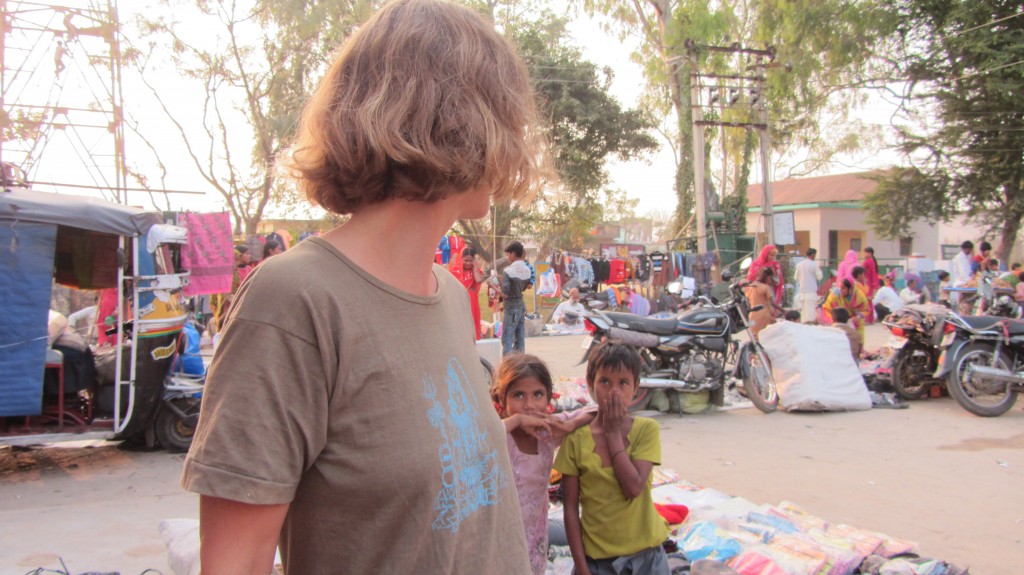 In a village about an hour from the ashram is another orphanage, this one for disabled kids. It’s nicknamed the “Polio Ashram”. When we went to meet the kids, they were sitting on the ground in two rows, one for boys, the other for girls. At first they just stared at our family of four. Then as I knelt down and took a hand from a boy and asked him a question, he relaxed. And smiled. I went down the lines and met each kid, asking questions or telling stories. They all gave me big smiles. And when Bill gave them his camera to play with the room lightened up. The kids laughed loudly looking at the photos they took. Except for the mute. But her smile took over her face.
In a village about an hour from the ashram is another orphanage, this one for disabled kids. It’s nicknamed the “Polio Ashram”. When we went to meet the kids, they were sitting on the ground in two rows, one for boys, the other for girls. At first they just stared at our family of four. Then as I knelt down and took a hand from a boy and asked him a question, he relaxed. And smiled. I went down the lines and met each kid, asking questions or telling stories. They all gave me big smiles. And when Bill gave them his camera to play with the room lightened up. The kids laughed loudly looking at the photos they took. Except for the mute. But her smile took over her face.
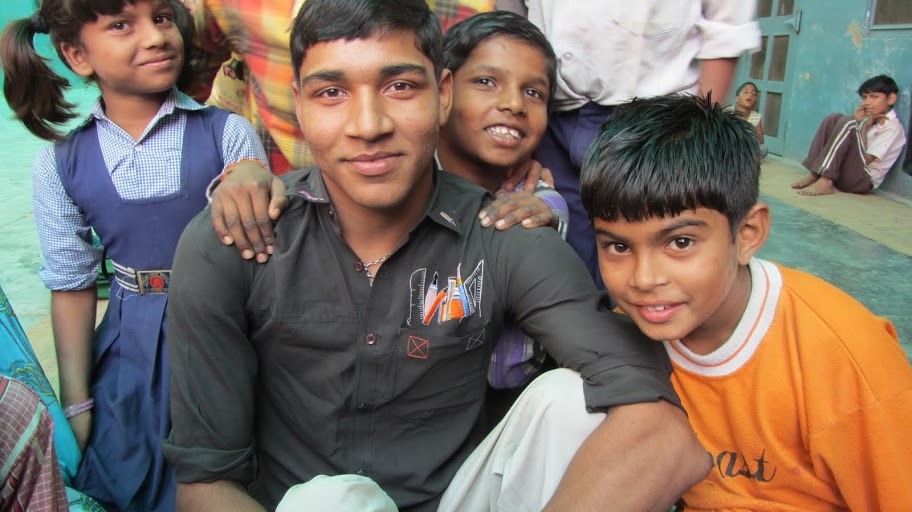
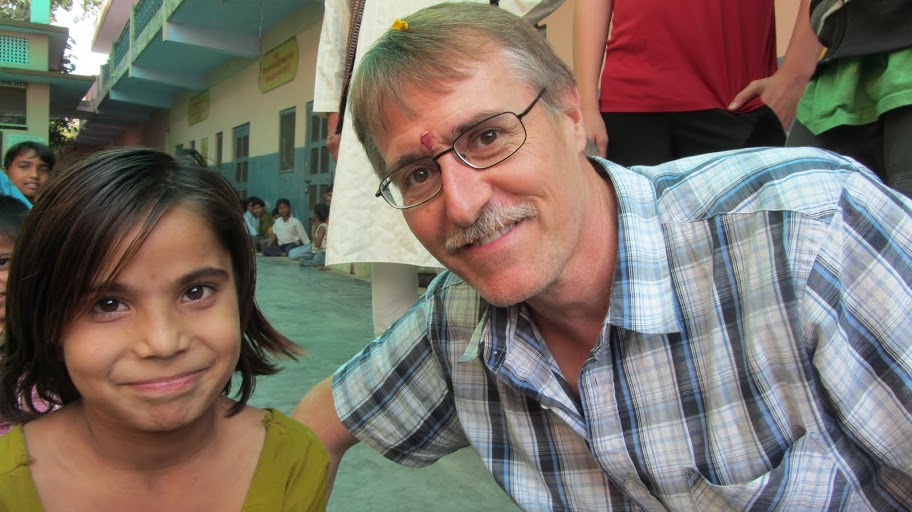
In New Delhi we stayed at an airport hotel on our way from Nepal to southern India. The doorman was in his mogul finest: a long coat, pointy shoes, a tall turban, and an impossibly stiff handlebar moustache. The moustache didn’t bend despite the breadth of his smile. He brought our bags upstairs to our room, smiling and joking. When he left for home, we were eating dinner at the hotel restaurant. He knocked on the window to wave and give us one more smile under that moustache, this time carrying a motorcycle helmet instead of the turban.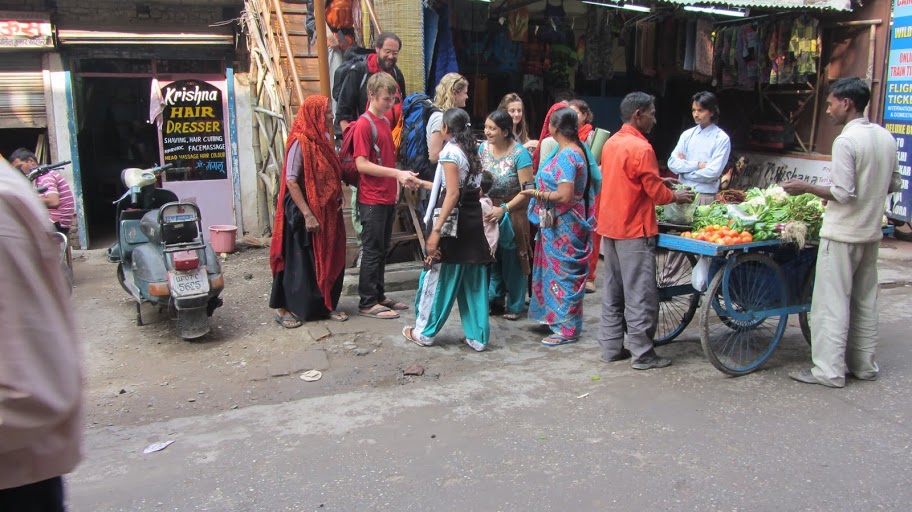 We were often an attraction for the Indians who were touring their country. We were novel. They wanted to be in photos with us. So we stood in front of a lot of Indian cameras. It was tiresome at first, but we quickly got used to it and would jump right into our pose. We learned we’d get rewarded with smiles and laughter.
We were often an attraction for the Indians who were touring their country. We were novel. They wanted to be in photos with us. So we stood in front of a lot of Indian cameras. It was tiresome at first, but we quickly got used to it and would jump right into our pose. We learned we’d get rewarded with smiles and laughter.
The head bob: There a scene in the Marigold Hotel with a man who’s a serious head bobber. I laughed remembering Hari, our innkeeper in Kochi, who couldn’t talk without bobbing his head. He couldn’t listen without bobbing his head. He could barely stand still without bobbing his head. As an observant Hindu he went to temple every morning, and every morning his forehead was painted with a small stripe of red paint. The tilak added a red focal point to the bobbing. It was like a hypnotist’s watch swing back and forth.
Religion: Everywhere you turn in India there is evidence of someone practicing their religion. Hinduism is most common, of course. People everywhere wear a tilak on their forehead having received it somewhere, from someone. We were often approached by a finger with fresh red paint not just at aarti or prayer service but also on the street. The beggars would want to paint a tilak on our foreheads as an the opportunity for payment. 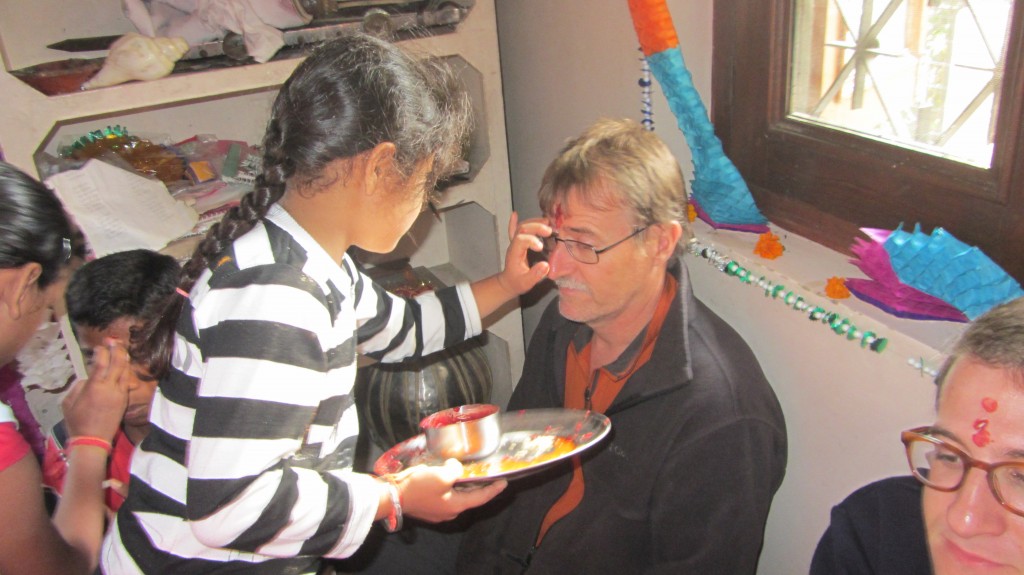
Haridwar is a holy city where the Ganges flows out of the Himalayas onto the plains of India. There is a prayer service along the banks of the river every evening. We joined thousands of Indians to watch one evening. We were told it was a poorly attended service. Bells and drums sounded from the temple across the river. Women washed their clothes in the river as a blessing. Men washed themselves. Multiple holy fires were lit as holy men moved the fires in patterns like a dance. Afterward, Hank placed a burning offering into the Ganges next to a hundred more.

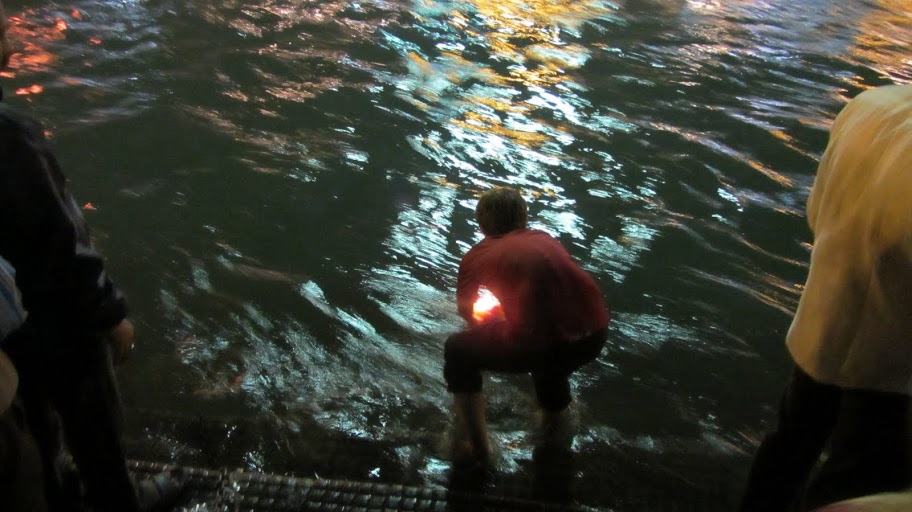 The music of religion was everywhere. We listened to the songs of aarti every morning and evening at the ashram. We often joined the kids in their temple following along in the song book. But when we didn’t attend we could hear the music creeping into our rooms. My kids can still invoke the tunes. We could hear songs of prayer from outside of the ashram as well. Not far from the orphanage was a purple temple. I could hear songs praising Vishnu as I walked toward the Ganges. I sought out source of the music for about a mile as it blared from the loud speakers. All night celebrations such as the jagran blasted their music despite the dark night and sleeping neighbors. We could hear the parties as we lay in our beds. The music was not just Hindu. We also heard the call to prayer outside of the ashram and as well as outside of our bedroom on a beach in Kerala. The bright yellow and green mosque was only feet from our window. We watched and listened as men in dhotis drummed and chanted while carrying a long Christmas palm tree down the streets of Kochi. We listened to Christmas carols in a 500 year old church.
The music of religion was everywhere. We listened to the songs of aarti every morning and evening at the ashram. We often joined the kids in their temple following along in the song book. But when we didn’t attend we could hear the music creeping into our rooms. My kids can still invoke the tunes. We could hear songs of prayer from outside of the ashram as well. Not far from the orphanage was a purple temple. I could hear songs praising Vishnu as I walked toward the Ganges. I sought out source of the music for about a mile as it blared from the loud speakers. All night celebrations such as the jagran blasted their music despite the dark night and sleeping neighbors. We could hear the parties as we lay in our beds. The music was not just Hindu. We also heard the call to prayer outside of the ashram and as well as outside of our bedroom on a beach in Kerala. The bright yellow and green mosque was only feet from our window. We watched and listened as men in dhotis drummed and chanted while carrying a long Christmas palm tree down the streets of Kochi. We listened to Christmas carols in a 500 year old church.
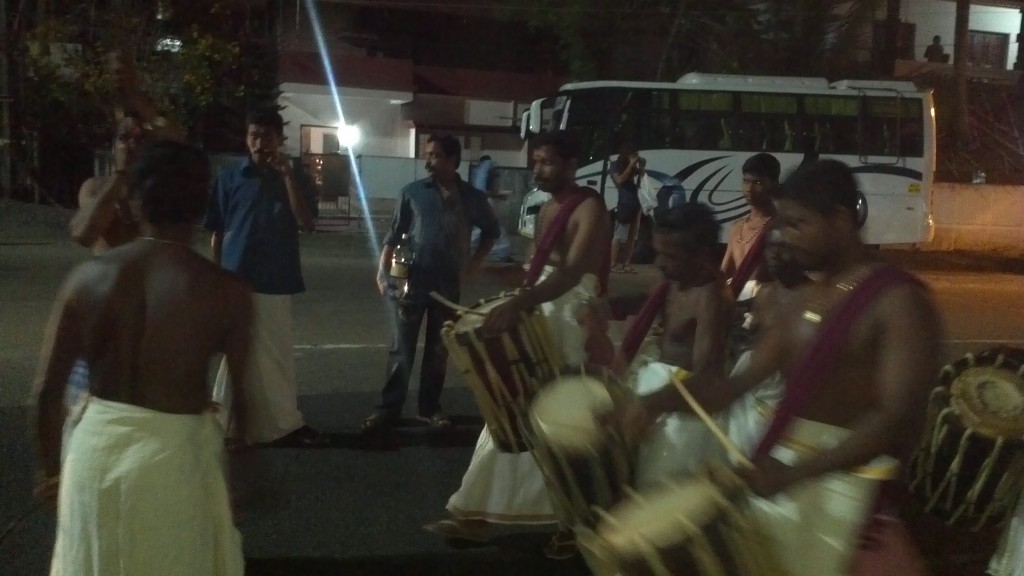 Nature: It is overcrowded in India. People and their stuff are everywhere. But we found a few hidden corners where nature was still the dominant force. On Christmas morning we went out searching for tigers. Rajasthan is mostly desert, but in Ranthambore National Park a forest of scrubby trees, dry grasses, and tall banyans provide shelter for the tigers.
Nature: It is overcrowded in India. People and their stuff are everywhere. But we found a few hidden corners where nature was still the dominant force. On Christmas morning we went out searching for tigers. Rajasthan is mostly desert, but in Ranthambore National Park a forest of scrubby trees, dry grasses, and tall banyans provide shelter for the tigers.
 We rode through the forests of Rajasthan in an open jeep dressed in hats, coats, and blankets to ward off the Indian winter. As we entered the park we drove through the river that spilled across the road and under the roots of a banyan tree. We laughed as someone said, “It’s like Disneyland!” But while we were searching, the tigers remained hidden among the vegetation. We saw other wild creatures and a tiger paw print the size of a salad plate but no majestic cats.
We rode through the forests of Rajasthan in an open jeep dressed in hats, coats, and blankets to ward off the Indian winter. As we entered the park we drove through the river that spilled across the road and under the roots of a banyan tree. We laughed as someone said, “It’s like Disneyland!” But while we were searching, the tigers remained hidden among the vegetation. We saw other wild creatures and a tiger paw print the size of a salad plate but no majestic cats.

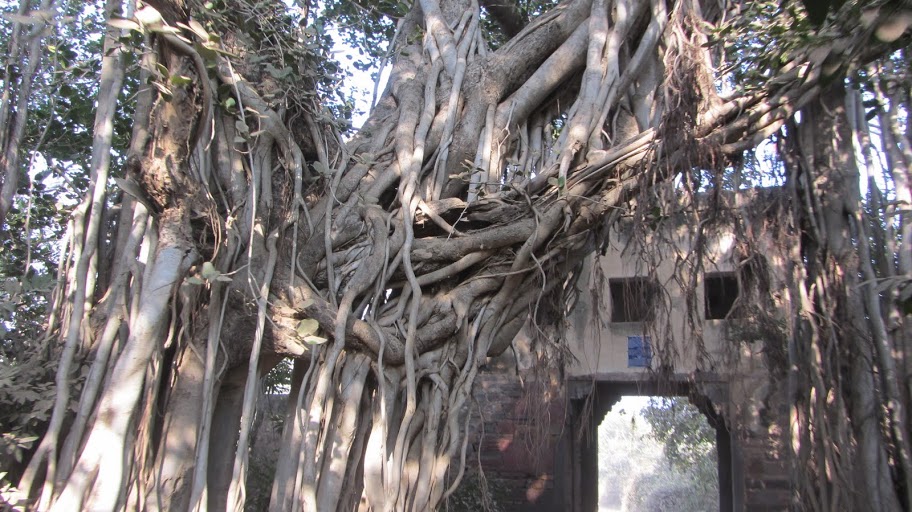 The state of Kerala was beautiful. We took a tourist boat trip up the backwaters. Wide rivers settle out into lagoons as they slow down near ocean. Canals link the lagoons. The jungle weighed in on us from both sides as we sailed up the canals in our quiet punt boat. We took a walk and picked wild spices: nutmeg wrapped in its shawl of mace, black pepper hanging like green and red grapes, and cinnamon peeling from the trunk. Catherine was in heaven eating pomelos right off the tree.
The state of Kerala was beautiful. We took a tourist boat trip up the backwaters. Wide rivers settle out into lagoons as they slow down near ocean. Canals link the lagoons. The jungle weighed in on us from both sides as we sailed up the canals in our quiet punt boat. We took a walk and picked wild spices: nutmeg wrapped in its shawl of mace, black pepper hanging like green and red grapes, and cinnamon peeling from the trunk. Catherine was in heaven eating pomelos right off the tree.

 We spent days on a beach five hours by train from Kochi. It was an uncommon tourist beach for India. Here there was no one pushing their wares and no one dumping their trash. We shared the space with a daily pickup game of cricket and some fishermen. We ate our meals looking through a grove of palm trees at the waves of the Indian Ocean. We swam in the morning, catching the warm waves with our bodies. We woke up early to sit on a rocky spit that jutted out into the waves. We watched as the red sun rose and the full moon set. We walked trails along the beach and discovered the delight of touch-me-nots. We settled ourselves in the calm of the Indian beach before heading back into the chaos of Indian life.
We spent days on a beach five hours by train from Kochi. It was an uncommon tourist beach for India. Here there was no one pushing their wares and no one dumping their trash. We shared the space with a daily pickup game of cricket and some fishermen. We ate our meals looking through a grove of palm trees at the waves of the Indian Ocean. We swam in the morning, catching the warm waves with our bodies. We woke up early to sit on a rocky spit that jutted out into the waves. We watched as the red sun rose and the full moon set. We walked trails along the beach and discovered the delight of touch-me-nots. We settled ourselves in the calm of the Indian beach before heading back into the chaos of Indian life.
The colors: It’s a colorful country. Sometimes the colors are hidden under the dust. Sometimes the colors butt up against the dust becoming even more vibrant . Everything is decorated: the homes, the temples, the cars, the animals, the people. For all the struggles of daily life in India, people still find the energy to beautify it.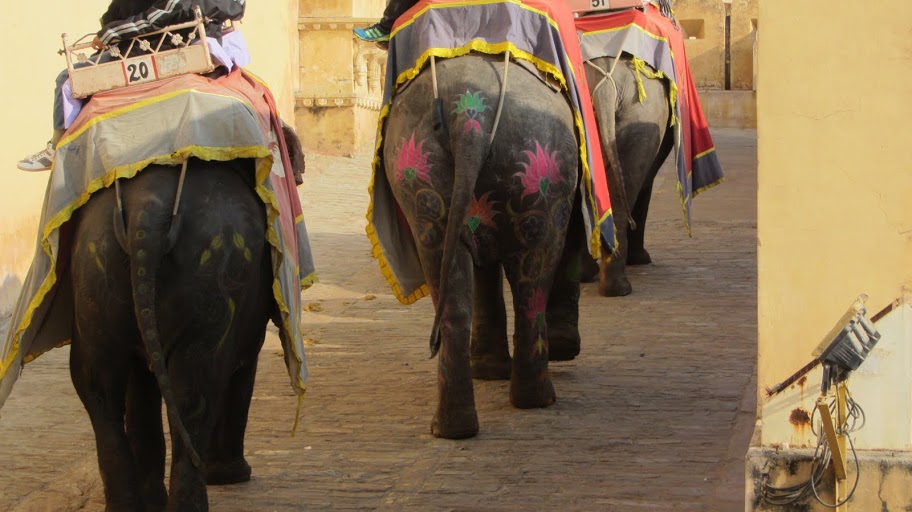
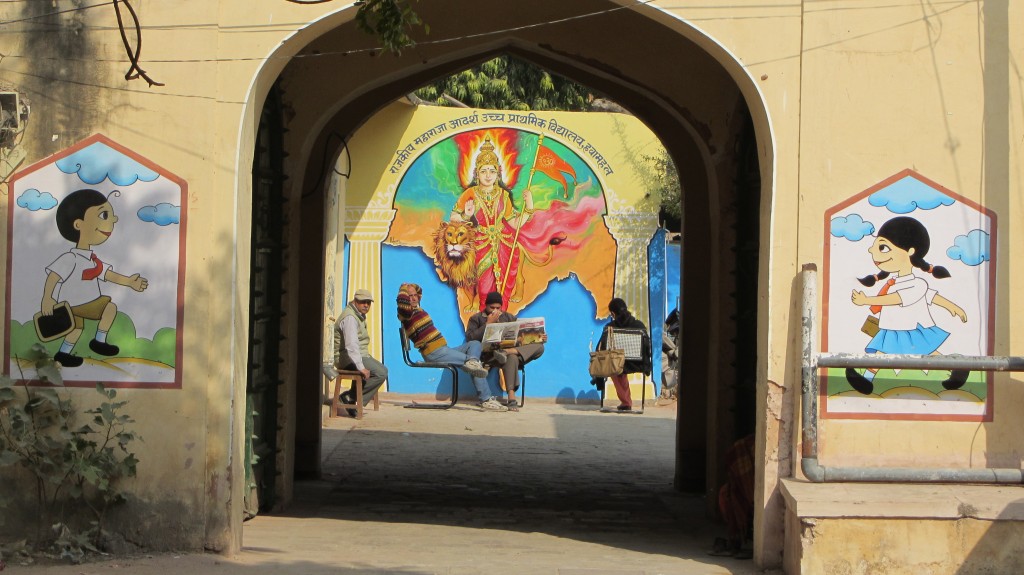

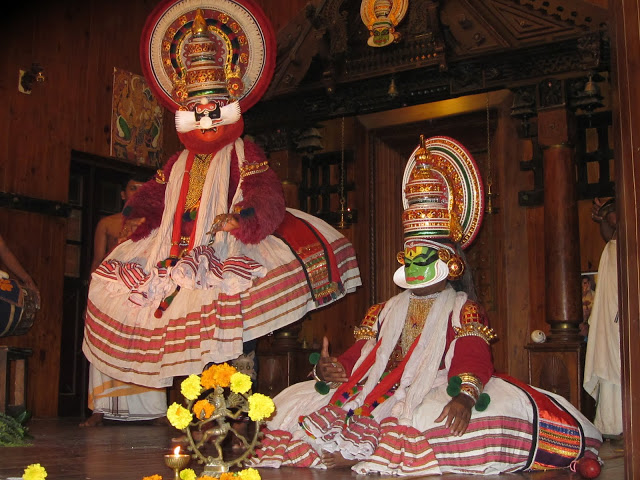
There is so much to India. Sometimes too much. But I want to visit India again to explore the culture and history, food and friends. And the beauty.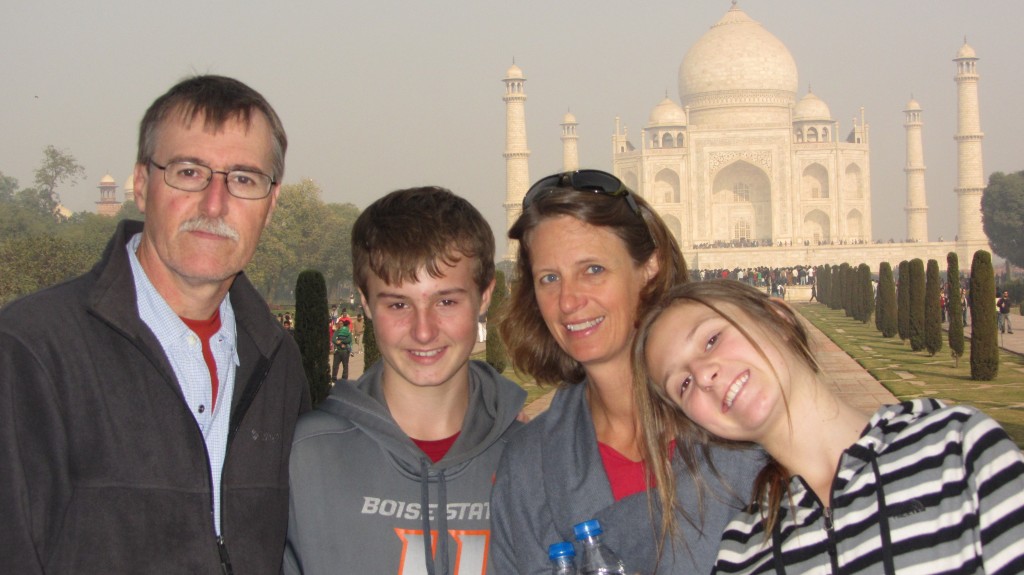


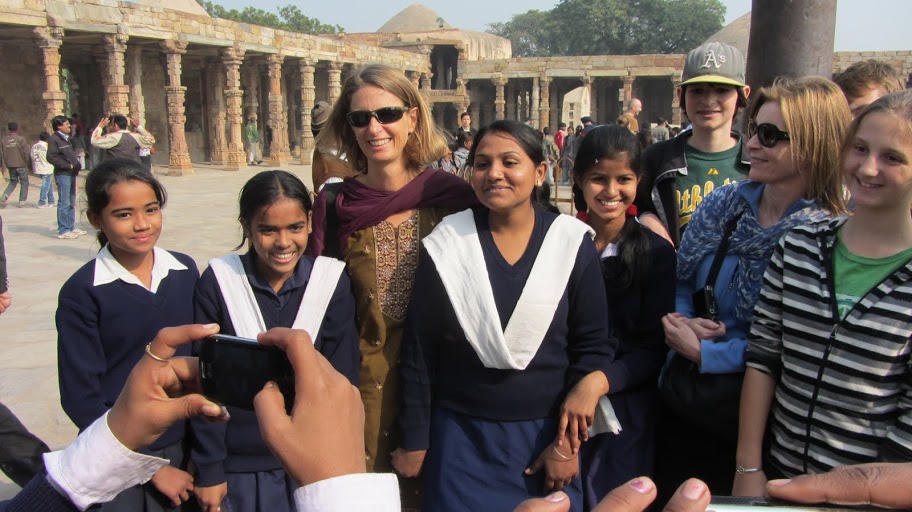
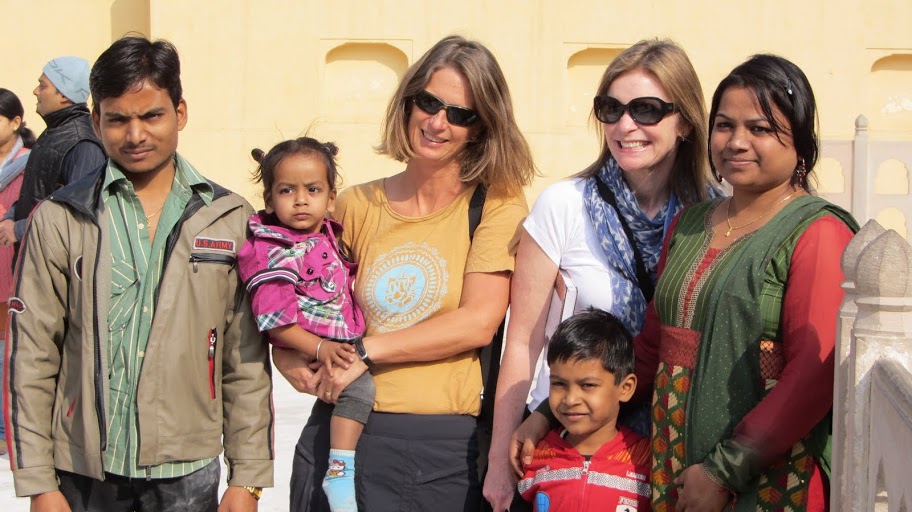
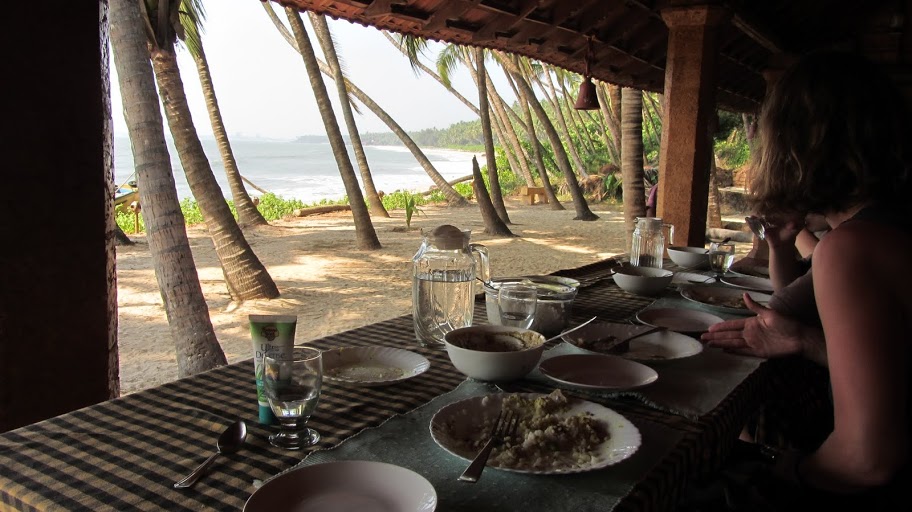
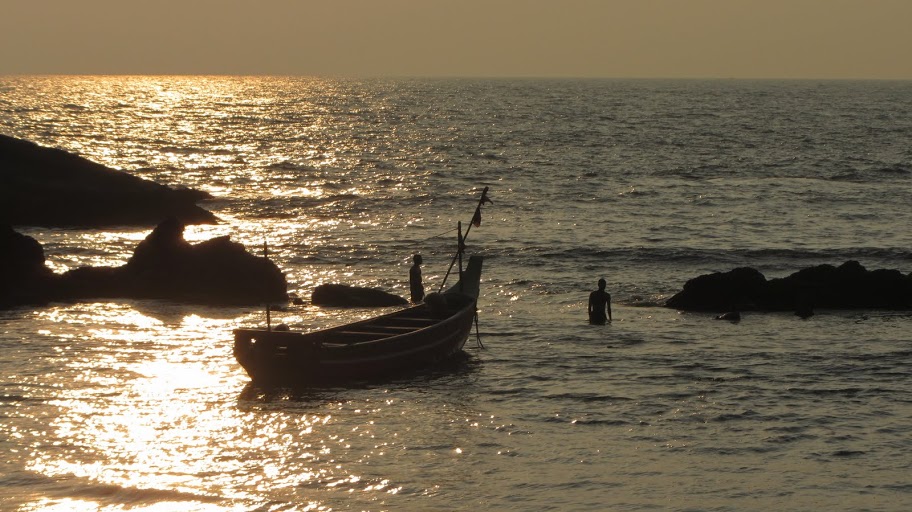




3 Responses to The Beauty That Is India